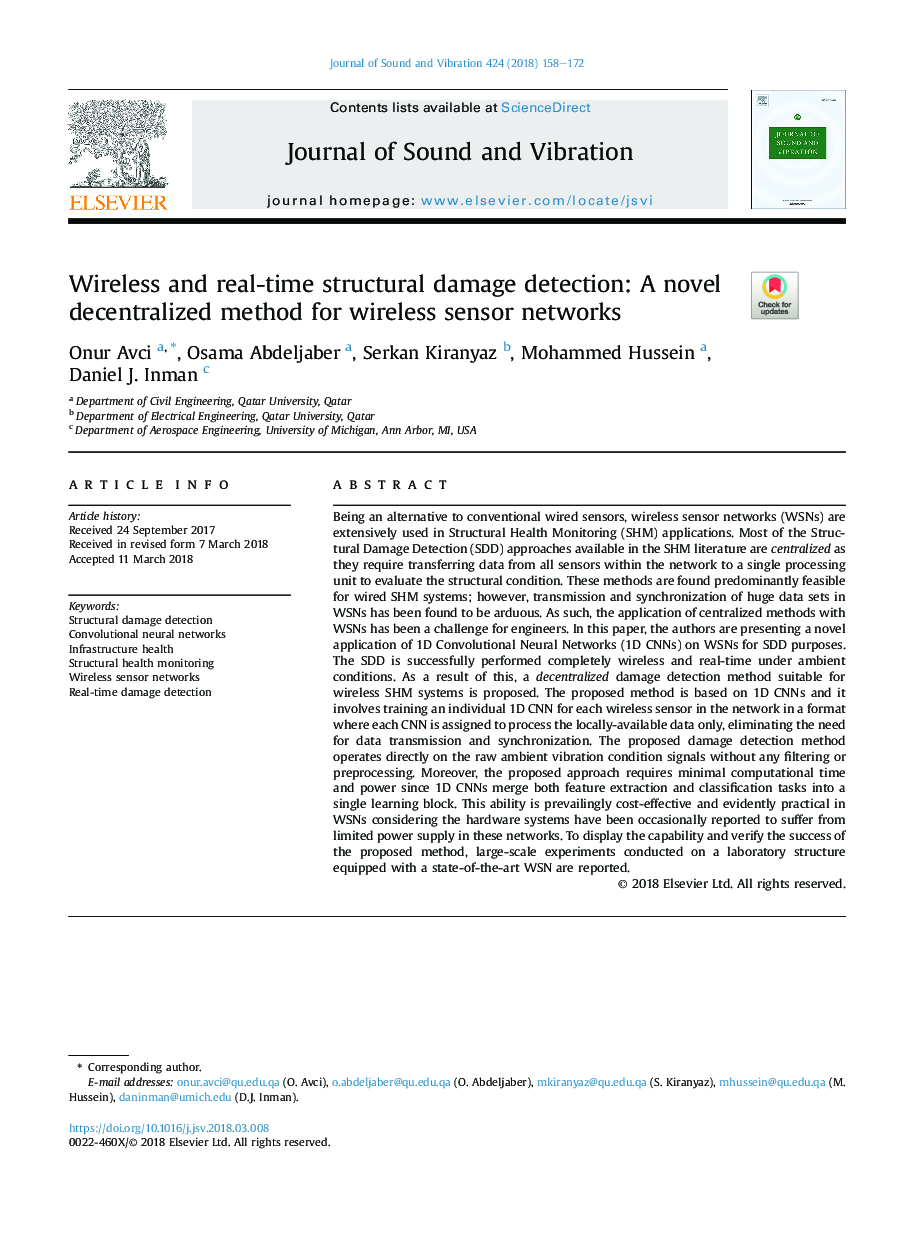| کد مقاله | کد نشریه | سال انتشار | مقاله انگلیسی | نسخه تمام متن |
|---|---|---|---|---|
| 6753141 | 1430809 | 2018 | 15 صفحه PDF | دانلود رایگان |
عنوان انگلیسی مقاله ISI
Wireless and real-time structural damage detection: A novel decentralized method for wireless sensor networks
ترجمه فارسی عنوان
تشخیص آسیب ساختاری بی سیم و زمان واقعی: یک روش غیر متمرکز برای شبکه های حسگر بی سیم
دانلود مقاله + سفارش ترجمه
دانلود مقاله ISI انگلیسی
رایگان برای ایرانیان
کلمات کلیدی
تشخیص آلودگی سازه، شبکه های عصبی انعقادی، سلامت زیرساخت، نظارت بر سلامت سازمانی، شبکه های حسگر بی سیم، شناسایی خسارت در زمان واقعی،
موضوعات مرتبط
مهندسی و علوم پایه
سایر رشته های مهندسی
مهندسی عمران و سازه
چکیده انگلیسی
Being an alternative to conventional wired sensors, wireless sensor networks (WSNs) are extensively used in Structural Health Monitoring (SHM) applications. Most of the Structural Damage Detection (SDD) approaches available in the SHM literature are centralized as they require transferring data from all sensors within the network to a single processing unit to evaluate the structural condition. These methods are found predominantly feasible for wired SHM systems; however, transmission and synchronization of huge data sets in WSNs has been found to be arduous. As such, the application of centralized methods with WSNs has been a challenge for engineers. In this paper, the authors are presenting a novel application of 1D Convolutional Neural Networks (1D CNNs) on WSNs for SDD purposes. The SDD is successfully performed completely wireless and real-time under ambient conditions. As a result of this, a decentralized damage detection method suitable for wireless SHM systems is proposed. The proposed method is based on 1D CNNs and it involves training an individual 1D CNN for each wireless sensor in the network in a format where each CNN is assigned to process the locally-available data only, eliminating the need for data transmission and synchronization. The proposed damage detection method operates directly on the raw ambient vibration condition signals without any filtering or preprocessing. Moreover, the proposed approach requires minimal computational time and power since 1D CNNs merge both feature extraction and classification tasks into a single learning block. This ability is prevailingly cost-effective and evidently practical in WSNs considering the hardware systems have been occasionally reported to suffer from limited power supply in these networks. To display the capability and verify the success of the proposed method, large-scale experiments conducted on a laboratory structure equipped with a state-of-the-art WSN are reported.
ناشر
Database: Elsevier - ScienceDirect (ساینس دایرکت)
Journal: Journal of Sound and Vibration - Volume 424, 23 June 2018, Pages 158-172
Journal: Journal of Sound and Vibration - Volume 424, 23 June 2018, Pages 158-172
نویسندگان
Onur Avci, Osama Abdeljaber, Serkan Kiranyaz, Mohammed Hussein, Daniel J. Inman,
